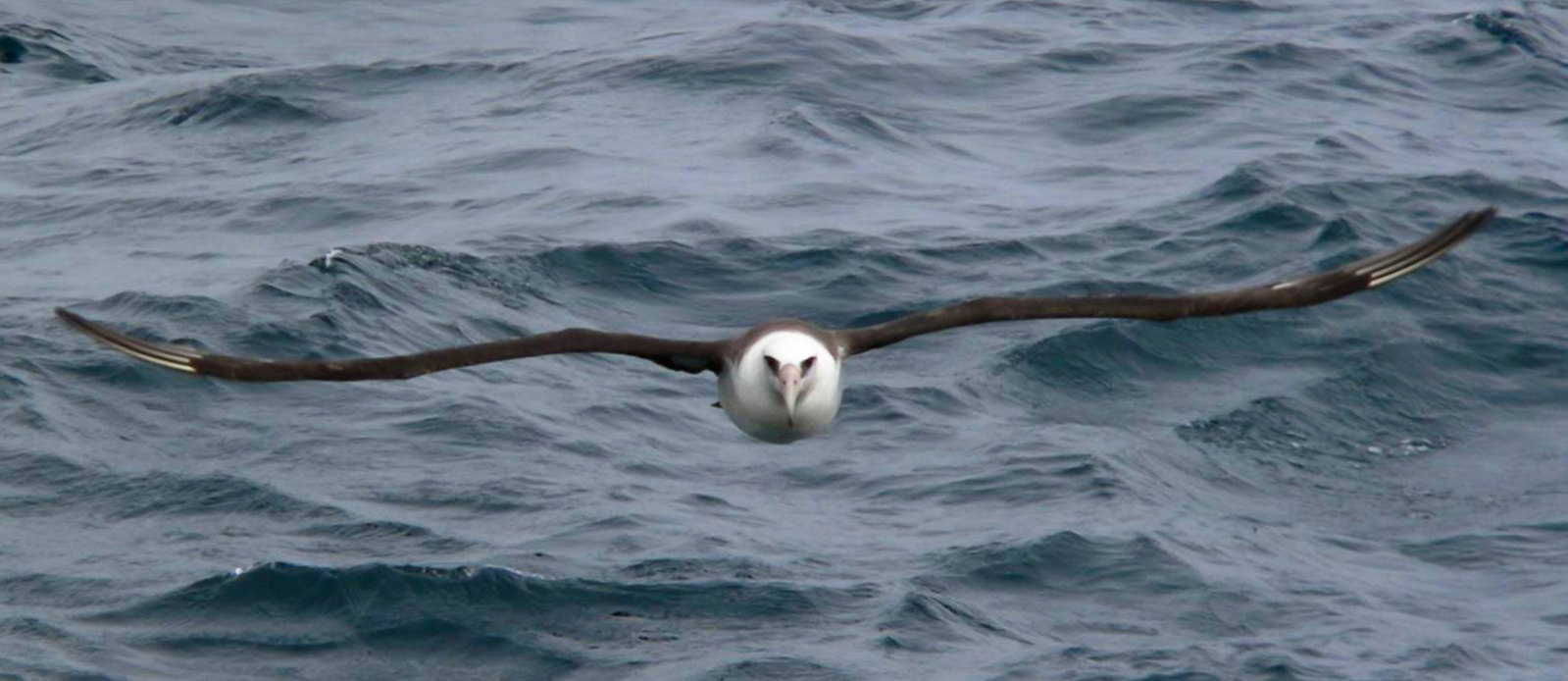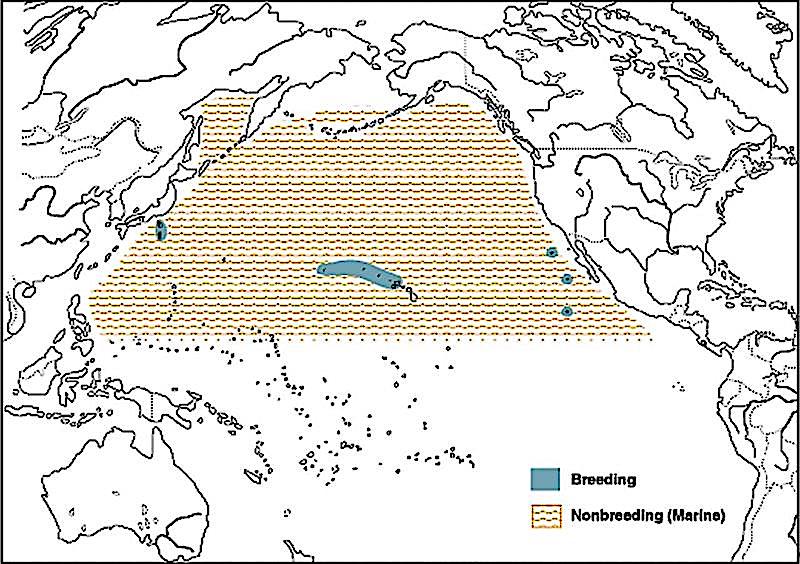Returning mōlī (Laysan Albatross) get a warm welcome at Kīlauea Refuge
You know the ceremony to welcome back the mōlī to Kauaʻi is going well when the air above the dancers is filled with soaring Laysan Albatross. Kīlauea Point National Wildlife Refuge hosted this beautiful program of hula and chant at the end of November. It was led by Kumu Kēhaulani Kehua and her Hālau (hula group) Palaihiwa O Kaipuwai Kumu Kehou. The group were happy to be upstaged by birds on the wing and even a couple of upstart nēnē that joined in on the action, honking furiously at the audience.
Kumu Kehua explained that she had known relatively little about the mōlī before she was taken to meet some nesting pairs a few years ago by Hob Osterlund of the Kauaʻi Albatross Network. It was love at first sight and since then, she has been learning more about the mōlī’s place in Hawaiian culture and the important role they play in Kauaʻi’s ecosystem. The event was timed to coincide with the first nests of the season.

Elizabeth Labunski / U.S.Fish and Wildlife Service
The ceremony also recognized the incredible journey that mōlī make every year. Like early Hawaiian navigators, they are led by the constellations. In November, it is time to rejoin their partner (they are monogamous and take great delight in reconnecting with their long term spouse) or find a mate, if they are new breeders. They nest on high bluffs along the north shore of Kauaʻi and many choose to make the Refuge home.
Nesting birds benefit from fencing and other management actions
The Refuge birds are particularly fortunate. They are protected from predators such as cats, rats, dogs and pigs by the management work that refuge staff undertake. Birds in other colonies are not always so lucky; in 2014, at least 26 birds were killed by predators on Kauaʻi. These are the same predators also decimate colonies of ʻuaʻu kani (Wedge-tailed Shearwaters) on the coast. This year alone, over 150 ʻuaʻu kani were killed in three different areas on Kauaʻi by dogs and cats – a problem which repeats itself annually
The Main Hawaiian Islands are going to become increasingly important for mōlī as climate change intensifies. More than 99% of the global population currently nest in the Northwestern Hawaiian Islands in the Papahānaumokuākea Marine National Monument. (See related post.) Some of those islands are very vulnerable to sea level rise – and even those with higher elevation will be affected by the increase in violent storms. That is a problem because storms can wash out mōlī nests, resulting in mass breeding failures.
These birds have very strong natal philopatry – they return to the same place to breed regardless of changing conditions. At Whale-Skate Island in the French Frigate Shoals, birds continued to nest, despite getting washed out annually, until the island physically went under water. When that happens to other islands in the chain, the mōlī will be looking for a new nursery – and Kauaʻi could be the perfect place. We need to start planning now for that future event by identifying and protecting suitable coastal land for the birds to nest. Predator control will be a crucial part of that forward planning.
The “Welcome Back” Mōlī Blessing Ceremony was presented in partnership with the Kaipuwai Foundation, Kauaʻi National Wildlife Refuge Complex, Kīlauea Point Natural History Association and Kauaʻi Albatross Network, with support from Garden Island Resource Conservation and Development.

Map from Cornell Lab of Ornithology
